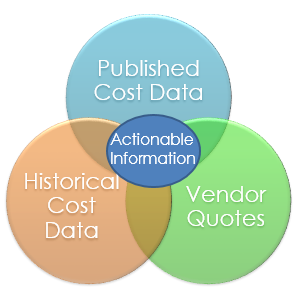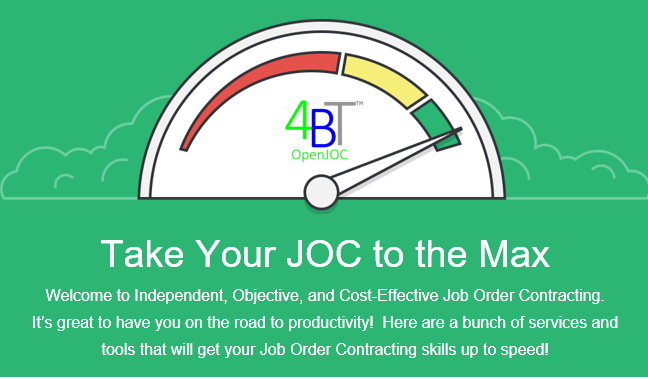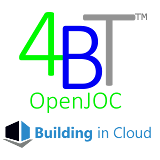Proper JOC contract design and management are central to improved renovation and repair outcomes. Public sector real property owners can significantly improve the percentage of quality construction projects delivered on-time and on-budget and to the satisfaction of all stakeholders.
A JOC Contract is the legal, multi-party procurement and construction delivery document that specifies roles, responsibilities, workflows, deliverables, time frames, and expenditure limits for renovation, repair, and minor new construction projects.
OpenJOC is a standardized, independent, objective, and defensible method for organizing, describing, pricing, procuring, and managing renovation, repair, and minor new construction activities.
JOC Unit Price Book







 JOC Contract strategy, development, implementation, and management involves a thorough understanding of LEAN Construction and Life-cycle Asset Management.
JOC Contract strategy, development, implementation, and management involves a thorough understanding of LEAN Construction and Life-cycle Asset Management.



































 Building in Cloud
Building in Cloud


































Traditional construction procurement methods and daily operations are unreliable.
Best Value Procurement and LEAN collaborative construction delivery methods are proven to delivery significant improvements.
Construction delivery processes must be structured to assure teamwork and continuous monitoring and improvement.
Participants must not only be competent, but share common goals as well as share risk and reward.
Focus must be upon outcomes, mission, and clients/customers.
Examples of proven LEAN collaborative construction delivery include Integrated Project Delivery, IPD, for major new construction, and Job Order Contracting, JOC, for renovation, repair, maintenance, sustainability, and minor new construction.
Owner must demonstrate LEADERSHIP and require COLLABORATION and engage in innovation, agility, and performance improvement.
Owners must EMPOWER teams without excessive management and control.
Owners must assure essential capabilities and competencies are present throughout the TEAM.